Blog
Putting the “E” back in EMS: Paramedics Respond to Abuse of the 911 System
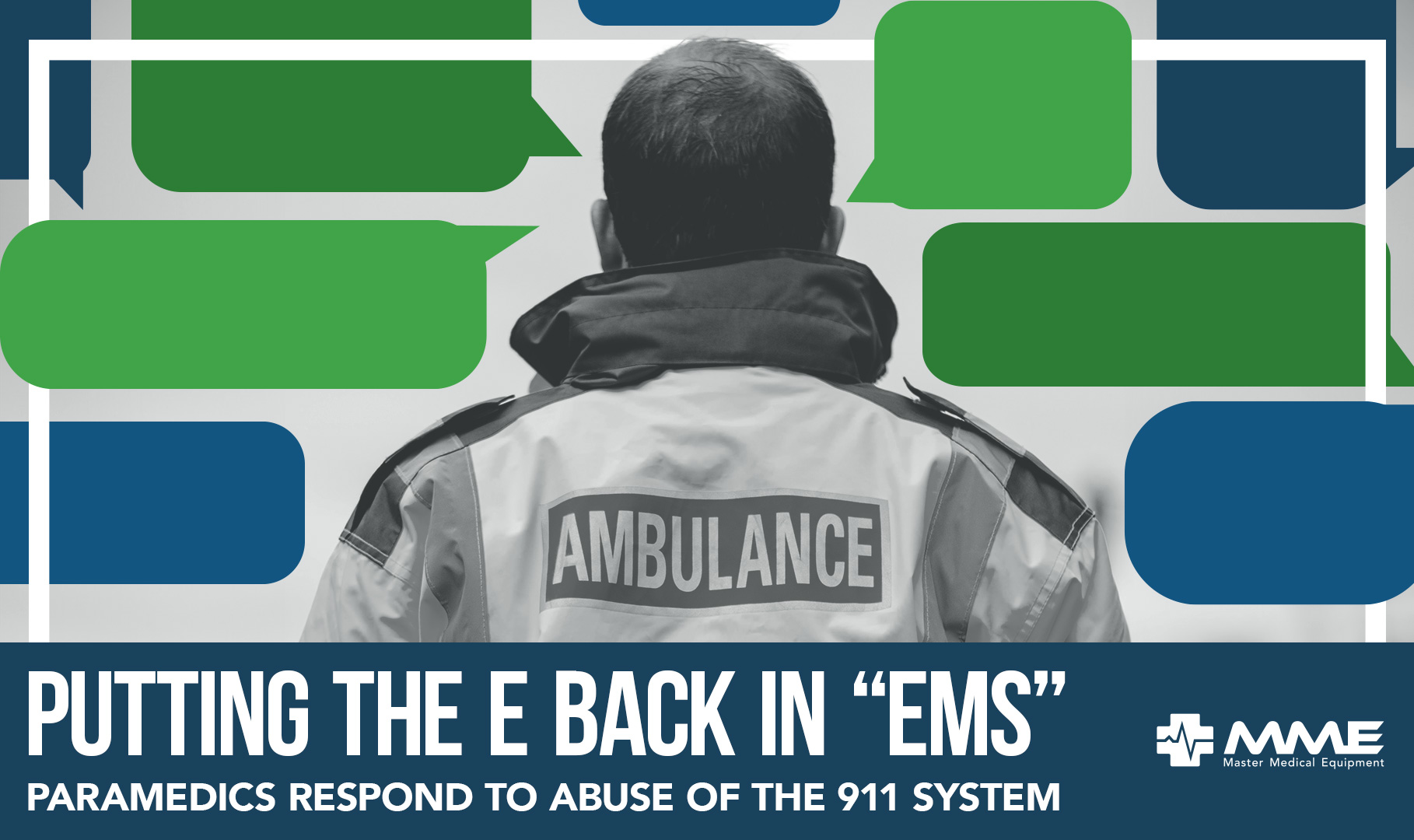
INTRODUCTION
Over the Summer, we put out an open survey to the EMS community, asking for feedback about difficulties facing paramedics’ daily lives and their experience with abuse of the 911 emergency system via non-emergency transports. We asked First Responders to propose specific, directed solutions that could build awareness and begin to bring around change in their state and local communities. The survey quickly spread around EMS circles, and before we knew it, we had collected almost two hundred responses in just over a week. Read what real paramedics had to say about this issue that has been largely unaddressed. (PDF version of the report can be found here)
![]()
ABOUT OUR RESPONDENTS
In 2023, our conversations with EMS, paramedics, and first responders all revolved around one main issue: abuse of the 911 system. We wanted to give the industry a voice to explore this problem, raise awareness, and begin forming solutions.

![]()
ABOUT THE PROBLEM: 911 System Abuse
 Ambulances are often called to transport patients who aren’t experiencing a medical emergency or don’t need a hospital at all. Here’s what EMS professionals had to say about these transports:
Ambulances are often called to transport patients who aren’t experiencing a medical emergency or don’t need a hospital at all. Here’s what EMS professionals had to say about these transports:
90%: Respondents agree that non-emergency transports in the 911 system are a misallocation of time and resources.
![]()
94%: Respondents agree that patients using the 911 system as non-emergency transport puts unnecessary strain on our healthcare infrastructure.
![]()
59%: Respondents agree that patients using the 911 system as non-emergency transport is the biggest challenge their service faces.
![]()
![]()
THE SIZE OF THE PROBLEM: 911 System Abuse
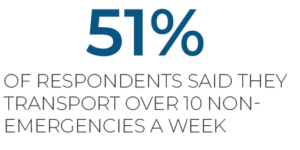
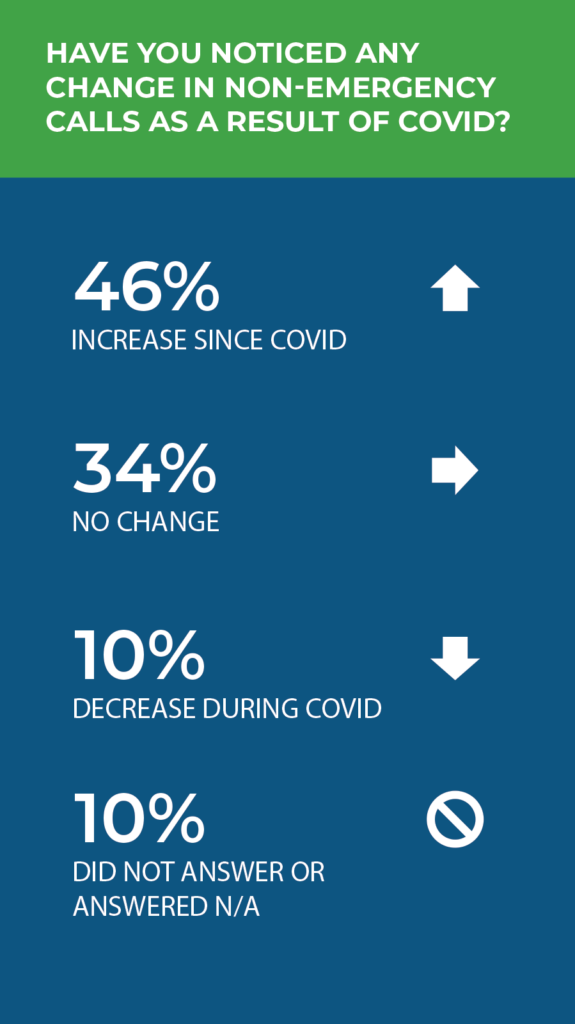

WHAT SHOULD BE DONE?
We asked respondents to propose some solutions. Here were the most frequently mentioned ideas:
#01 Consequences/Cost for Non-Emergent Abusers
“Being able to charge a flat fee even to those on [Medicare], who never ever get a bill for services. Even if it’s a small bill, it would make them think twice if they needed an ambulance or if they could get there themselves. And being able to penalize them for non-payment of bills for a bill that came from non-emergency ambulance usage.”
#02 Educate the Public on Proper Use of EMS
“Teach the proper use of EMS in schools at like middle school and high school. Similar to when PD and Fire go to schools talking about when to call 911.”
#03 Allow EMS to Refer Non-Emergencies
“Give EMS personnel the ability to transport to alternate destinations (i.e. urgent care clinic) and/or refuse transport for complaints which should be handled by a PCP/in the outpatient setting.”
#04 Healthcare Reform
• “Implement a tiered response system with BLS and ALS response and transport.”
• “EMS needs to be considered an Essential Service like Fire and Police.”
• “Better access to mental health care so people don’t always have to wait until crisis.”
• “Community Paramedicine in rural areas.”
#05 Create Non-Emergency Alternatives
“Ability to call for non-emergent transport for patients that do not need an ambulance.”
#06 Funding & Staffing
“Improved State and Federal funding and recognition that EMS does have an impact on the quality of life in the community.”
![]()
OTHER TOP ISSUES
#01 Wages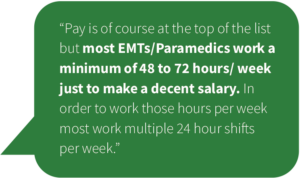
#02 Staffing Shortages
#03 Mental Health & Burnout
#04 Lack of Funding
#05 Leadership
#06 Mismanagement of Time/Resources
#07 Public Perception
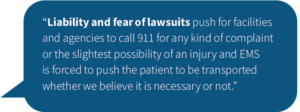 #08 Lack of Education & Training
#08 Lack of Education & Training
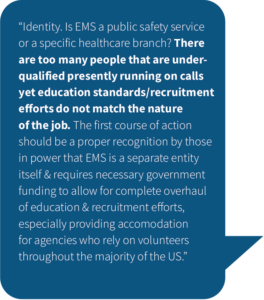
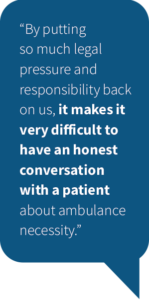
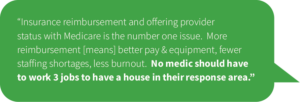
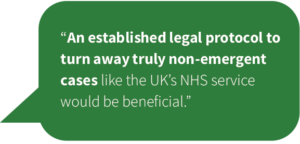
JOIN THE CAUSE: Getting Involved/Action Steps
There is no simple solution to abuse of the 911 system and the strain that EMS professionals experience, but here are ways you can join the cause and make an impact.
 Reach Out to Your Representatives
Reach Out to Your Representatives
Significant change needs to take place in emergency services. Local, state, and federal legislature can help protect both patients and professionals and shape the future of the EMS profession for the better. NAEMT keeps close tabs on EMS-related legislature on their advocacy webpage (naemt.org/advocacy), so you can research specific bills and look up your representative all in one convenient place.
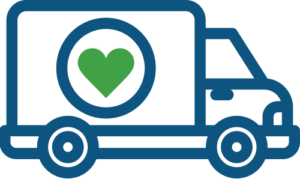 Advocate for Community Paramedicine
Advocate for Community Paramedicine
Community paramedicine is an emerging field in healthcare where some EMS providers, including EMTs and paramedics, are designated to perform “home visits” to those requiring primary care or preventative care. This alleviates the strain on the 911 paramedics by reducing their non-emergency transports. Rural communities would significantly benefit from this model, as they often call 911 because they have no other medical provider available.

Expand Mental Health Services
Lack of mental health services negatively impacts EMS professionals and their patients. People suffering from debilitating mental health issues may have nowhere to go to receive treatment, so they call 911 and often abuse the system. However, EMS also face mental health challenges due to their stressful work. Contact representatives and inform them that mental health services must be expanded and support relevant legislation.
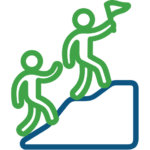 Opportunities for Upward Mobility
Opportunities for Upward Mobility
EMS leaders are advocates for themselves and the EMS professionals employed. However, the EMS career ladder can be confusing, as there’s not always a clear next step for career advancement. The National EMS Advisory Council (NEMSAC) is exploring creating graduate degrees to give EMS clinicians greater authority in a medical emergency (authority to prescribe or refer patients). EMS leaders should be the best they can be and pour into the next generation of leaders so EMS keeps its talented young professionals.
 Public Relations Campaigns
Public Relations Campaigns
The public should be aware of the proper use of the 911 system. Education initiatives in schools and community centers could help patients know when calling an ambulance is appropriate and what the alternatives are when an ambulance is not necessary but medical help is still needed.
![]()
At Master Medical Equipment, our mission is to equip first responders to save more lives, one relationship at a time. We equip EMS professionals with resources; not just capital medical equipment, but also by raising awareness and promoting issues including wages, burnout, staffing, mental health, and daily abuse of the 911 system. We’re asking you to join the fight alongside us. Join the conversation on social media and let us know how we can help you share your story.
